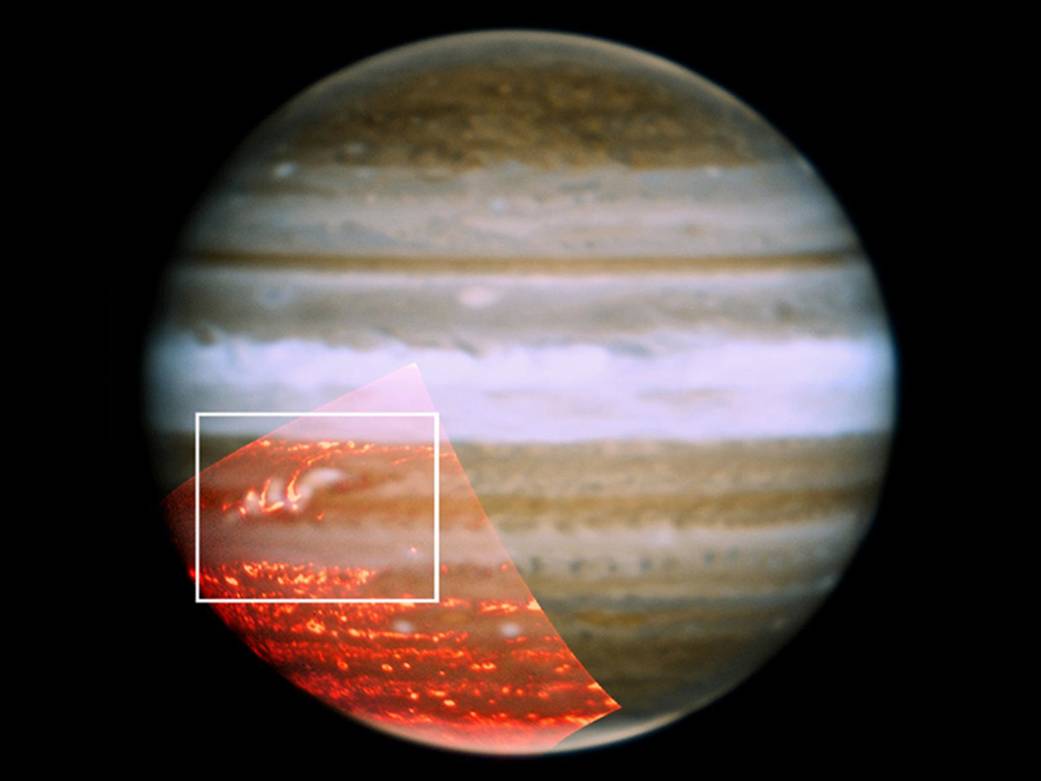
This image is a composite of three color images taken on Nov. 18, 2010, by the Gemini North telescope in Hawaii. The composite image shows a belt that had previously vanished in Jupiter’s atmosphere is now reappearing. .
The three images used to make the composite were taken at three different parts of the infrared spectrum – 2.12 microns (blue), 1.69 microns (yellow) and 4.68 microns (red). At 1.69 microns, scientists see sunlight reflected from Jupiter’s main cloud deck – the same clouds they see in visible light. At 2.12 microns, scientists see sunlight reflected from higher-altitude particles well above the main deck. At 4.68 microns, scientists see thermal emission arising from the tops of Jupiter’s clouds, with the hottest emissions coming from the deepest atmosphere and signifying regions with minimal overlying cloud cover.
The region just to the left of the center, inside the white box, shows the region of the South Equatorial Belt with an unusually bright spot, or outbreak. One thing scientists were looking for in infrared was evidence that the darker material emerging to the west of the bright spot was the start of the clearing of the cloud deck. The particles lofted by the initial outbreak are easily identified in yellow as high-altitude particles at the upper right, with a second outbreak to the lower left. In the coming weeks, further outbreaks are expected to take place to the west (left) of those seen in this image, and the clear atmospheric regions will begin to fill this latitude band at the same time as the dark brown color typical of this region returns.Image credit: NASA/JPL/UH/NIRI/Gemini/UC Berkeley


























